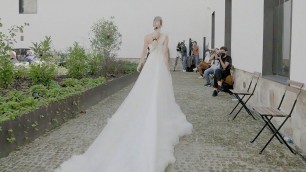

'Thanks Birch for sponsoring! Get $400 off your organic mattress, plus two free pillows, at https://birchliving.com/nicolerudolph It\'s finally time for another historically accurate cosplay, so that means RESEARCH! I don\'t want to say that\'s my favorite part of a project, but it certainly is the most exciting! This time I\'m digging up info on English mens fashion of the 1830s and 1840s. Early Victorian menswear was not the bland suits we\'ve come to associate with the 19th century. It was full of patterns and prints, newly invented colors, and some surprising silhouettes. Simply put, it\'s not boring. And Beau Brummell had nothing to do with ANY of it! So let\'s start breaking down that myth. While men\'s clothing did calm down at the end of the 18th century, it was continuing in the direction it had been for decades at that point. Less trim, more practical colors and patterns, slimmer fit and shape, etc. The last burst of exaggeration with massive buttons and mixing prints faded out into the 1790s with political and cultural shifts. That\'s not to say every man was wearing bold ensembles, but they were at least a bit more common in everyday fashion. So even before Beau Brummell gained notoriety a transition had begun. This, of course, says nothing about the groups that chose the more fashionable extremes. Fops, Puppies, Macaronis, Incroyables, and more were immortalized in the pages of satirical prints. Their title was more than just an outfit, however. They had lifestyles of excess that complimented their appearance. And these groups hardly disappeared as they moved into the 19th century. Dandies became the fashionable group du jour, and Beau Brummell was considered the ultimate Dandy. Which all speaks to how Brummell was not the inventor of \"boring\" men\'s fashion. While he emphasized a clean and put together look over gaudy and flashy pieces, it was far from mundane. Wearing black and navy doesn\'t make someone boring- it\'s looking like everyone else. And Beau Brummell was known to stand out in any room for his poise and presentation. But, even after he fell from favor in 1813 and soon left England, mens fashion continued to evolve. Mirroring women\'s garments of the same era, men\'s suits inflated and deflated throughout the second quarter of the century. Sleeves grew in size, collars stood higher to match. The absurdly tight pantaloon gave way to the oversized trouser leg (which even went through a flared phase). Waistcoats were made from flashy prints and colors, just in case the suit wasn\'t. And tartan plaids became the trend for a quite a few years amidst it all. And with all that said, let\'s move on to the next big project! A Muppets Christmas Carol is strangely enough, one of the most accurate and well costumed historical films of all time. And Gonzo is no exception! Like many of the other Muppet movies, everyone is playing a character of sorts and Gonzo is telling the story from the perspective of Charles Dickens himself. I assume this sets it up to be around 1842 or 43, just as the story was being written and published. So, now that I know a bit more about the general shift in men\'s clothing during that time, I can start to analyze each piece and build what is a surprisingly complex ensemble for such a small scale!
Tags: menswear , tailoring , mens fashion , fashion history , 100 years of fashion , victorian era , 19th century , weird history , fashion evolution , Explainer videos , fashion analysis , victorian fashion , historical fashion , 18th century fashion , historical costuming , nicole rudolph , 19th century fashion , history myths , busting myths , deadly victorian fashions , victorian silhouette , historically accurate cosplay
See also:

















comments